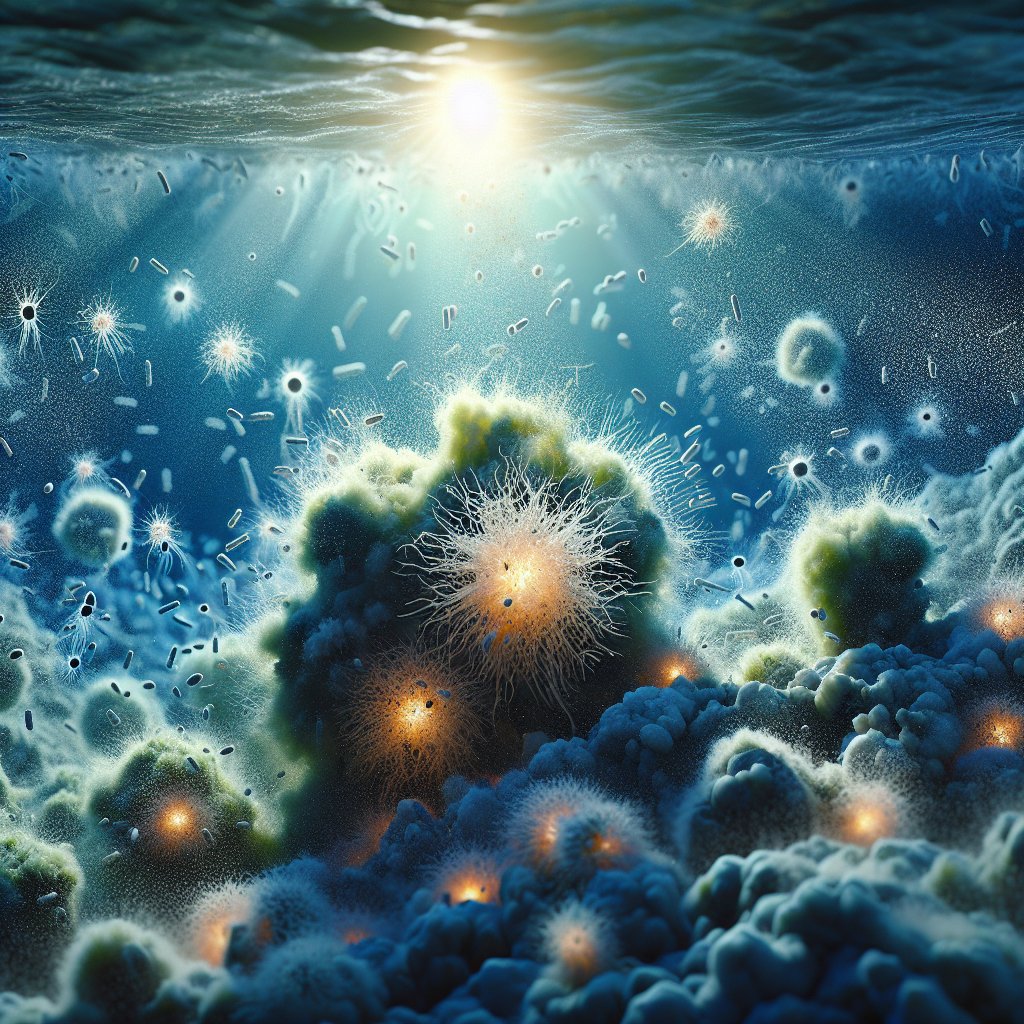The Secret Life of Ocean Sugars
In the vast expanse of our oceans, a microscopic drama unfolds daily—one that plays a pivotal role in the Earth’s carbon cycle. At the heart of this drama are sugars, produced by algae, which are not just sweet treats but crucial components of marine ecosystems. These sugars serve as both food and currency in the marine world. However, not all sugars are created equal. Some are simple and quickly consumed by microbes, while others are complex and require specialized enzymes to break down. The fate of these sugars determines whether carbon is released back into the atmosphere or locked away in the ocean depths for centuries.
Enter the glowing sugar probe—a groundbreaking tool developed by scientists to illuminate these hidden processes. By tagging sugars with fluorescent dyes, researchers can now watch in real-time as microbes feast on these sugary morsels. This innovation provides a window into the microbial world, revealing which organisms are active and under what conditions. It’s like having night-vision goggles for the ocean, allowing scientists to map out the intricate dance of carbon cycling with unprecedented clarity.
How the Glowing Sugar Probe Works
The glowing sugar probe is not just a flashy gadget; it’s a sophisticated piece of scientific wizardry. At its core is a process known as Förster resonance energy transfer (FRET), which involves two fluorescent dyes attached to a sugar molecule. When the sugar is intact, these dyes remain silent. But when a microbial enzyme breaks the sugar’s backbone, the dyes light up like a neon sign, indicating that the sugar is being consumed. This allows researchers to pinpoint exactly when and where sugar degradation occurs.
This tool has been tested across various environments—from purified enzyme tests to live cell cultures and complex microbial communities. One of the first sugars to be tracked was α-mannan, a polysaccharide prevalent in algal blooms. The probe’s ability to perform in such diverse settings underscores its potential to revolutionize our understanding of microbial metabolism in the ocean. By tracking these processes, scientists can better grasp how carbon moves through marine ecosystems and how it might be affected by changes in the environment.
Implications for Marine Carbon Cycling
Understanding the breakdown of sugars in the ocean is crucial for several reasons. For one, it helps scientists predict how much carbon is sequestered in the ocean versus how much is released back into the atmosphere—a key factor in climate change models. Moreover, by identifying which microbes are responsible for sugar degradation, researchers can better understand the biodiversity of marine ecosystems and how they respond to environmental stressors.
The glowing sugar probe opens up new avenues for research, allowing scientists to study microbial communities without needing prior genomic knowledge. This is particularly valuable in the ocean, where the sheer diversity of life can be overwhelming. By mapping the progression of glycan breakdown, researchers can gain insights into the roles different microbes play in carbon cycling. This knowledge is not only academically fascinating but also essential for developing strategies to mitigate the impacts of climate change on our oceans.
A New Era in Ocean Research
The development of the glowing sugar probe marks a significant leap forward in oceanographic research. It represents a collaboration between chemists, microbiologists, and ecologists, each bringing their expertise to bear on a complex problem. This interdisciplinary approach is not just a buzzword—it’s the future of scientific discovery. By working together, these scientists have created a tool that could transform our understanding of the ocean’s role in the global carbon cycle.
As we continue to explore the depths of our oceans, tools like the glowing sugar probe will be invaluable. They allow us to ask new questions and find answers in places we never thought to look. In a world where climate change is an ever-present threat, understanding the intricacies of carbon cycling is more important than ever. So, the next time you gaze out at the ocean, remember that beneath its surface lies a world of sugars and microbes, locked in a dance that shapes the very air we breathe.



